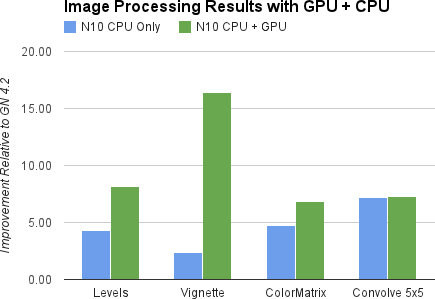Google has already released the binaries for Android 4.4 “KitKat” for the Nexus 5, and images are coming for Nexus 4, Nexus 7, and Nexus 10, in the next few weeks. Source code is also available in AOSP (Android Open Source Project). However, even though KitKat has been optimized for older devices, the Galaxy Nexus won’t an official Android 4.4 released because it was released at the end of 2011, which is over the 18 months update window guaranteed by Google. Many people are upset about this decision, and several people have started working on KitKat for Galaxy Nexus. The Linaro team found a solution within minutes by going to the convenience store, and providing KitKat on Galaxy Nexus as shown below. However, usability was not really ideal, so they had some more work to do… In the meantime, Grabak, a developer and member of XDA Forums, provided an alpha […]
Embedded Android Training Workshop At Linaro Connect Asia 2013
Karim Yaghmour, Opersys’ CEO, gave 4 training sessions dealing Embedded Android at Linaro Connect Asia 2013, in Hong Kong, earlier this month. Charbax filmed those 4 40 to 50 minutes session with excellent video and audio quality, so I encourage you to watch all sessions if you are interested in this topic. The presentation slides are available on Slideshare. The first training session is entitled “Android Internals”, and Karim introduces Android’s overall architecture, following the agenda below: Android Concepts Framework Intro Overall Architecture System startup Linux Kernel Hardware Support Native User-Space Dalvik JNI System Server Calling on Services Activity Manager Binder HAL Stock AOSP Apps Case-in-Point The second session “Working with the AOSP” deals with the following key points: Tools and location Content Building Build tricks Build system architecture Output images Using adb Custom toolchains and dev kits Compatibility Test Suite Basic hacks The third session entitled “Native Android user-space” […]
Android Jelly Bean 4.2 SDK, Source Code and Binary Images Are Now Available
As the Nexus 4 smartphone and Nexus 10 tablet became available for purchase yesterday, Google released Android 4.2 SDK for developers and pushed Android 4.2 to AOSP. The Android 4.2 (Jelly Bean) SDK platform (API level 17) brings the following key improvements: Performance – Renderscript computation can be run directly in the GPU on the Nexus 10. This is a first since Exynos 5250 is the first ARM processor capable of supporting GPGPU (via Mali-T604 GPU). See the chart of the right showing results between CPU and CPU+GPU computation of some multimedia benchmarks. Lock screen widgets – Users can now place interactive lock screen widgets directly on their device lock screens. This only requires a small update to adapt existing widgets to run on the lock screen. Daydream – An interactive screensaver mode that can be used when the device is charging or docked to a desk dock. Better external […]
Linaro 12.08 Release with Kernel 3.6 and Android 4.1.1 Jelly Bean
Linaro release 12.08 includes Linux Kernel 3.6-rc2 and is the very first release with Android Jelly Bean (4.1.1-R4). The Android platform team has managed to port Android Jelly Bean to all their main development platforms: Versatile Express, Versatile Express RTSM, Samsung Origen, TI PandaBoard, ST Ericsson Snowball, as well as Samsung Galaxy Nexus smartphone. They’ve also added TINY_ANDROID, a minimal Android build that can be used for kernel development, toolchain work and other development where users only need a console. It’s possible to get the source code, build it and access the shell within 10 minutes. U-boot-Linaro has been updated and is now based on the latest upstream release v2012.07. Next month, we might be able to see a preliminary port of Android on 64-bit platform (ARMv8). Here are the highlights of the release: Android Automated Methanol (http://gitorious.org/methanol) browser benchmarking in Linaro Android. Automated over 100 Jelly Bean AOSP tests. […]
Android 4.1.1 Jelly Bean Source Code Released
Jean-Baptiste Queru, Android Open Source Project lead, announced that Android 4.1.1, Jelly Bean has been released to AOSP and uses the android-4.1.1_r1 tag. Proprietary binaries are available for Nexus 7 and Galaxy Nexus right now, and Nexus S (GSM and CDMA) and Xoom will be available later. If AOSP repo has not changed since the first Android 4.0 release, you should be able to get the source as follows:
|
1 2 |
repo init -u https://android.googlesource.com/platform/manifest -b android-4.1.1_r1 repo sync |
There is also a development branch (jb-dev) with the latest improvements and features. Once you get the code, you may want to build and run it. Instructions to build and run Android 4.0 (not yet updated to Android 4.1.1 with Galaxy Nexus 7) are available at http://source.android.com/source/building.html. Factory images for Android 4.1.1 for Nexus devices will eventually show up at https://developers.google.com/android/nexus/images Jean-Luc Aufranc (CNXSoft)Jean-Luc started CNX Software in 2010 as a part-time endeavor, before quitting his job as a software engineering […]
Android Device Porting Tutorial – Android Builder Summit 2012
Benjamin Zores, Open Source Software and Multimedia Architect at Alcatel-Lucent, gives step-by-step to port Android to your own device at Android Builder Summit in February 2012. Abstract: This talk is presented as a step by step tutorial meant for Android platform rookies, as to discover all Androidisms one has to tackle down to bring his own custom device to life. Based on a real-life Android 4.0 ICS device porting experience, the talk will cover early board bringup (from U-Boot and Fastboot to Linux kernel and drivers), AOSP device integration, Android-specific device init customization, touchscreen input layer adaptations and Hardware Abstraction Layer (HAL) driver interfaces development. You can also download the presentation slides on linuxfoundation.org website. Jean-Luc Aufranc (CNXSoft)Jean-Luc started CNX Software in 2010 as a part-time endeavor, before quitting his job as a software engineering manager, and starting to write daily news, and reviews full time later in 2011. www.cnx-software.com
Android Variants, Hacks, Tricks and Resources – AnDevCon II
The second Android developer Conference (AnDevCon II) took place about 10 days ago. Karim Yaghmour of OperSys published the presentation slides he used during his two Android presentations. The first presentation was Embedded Android Workshop, the same presentation he did at Android Open 2011. The second presentation “Android Variants, Hacks, Tricks and Resources” slides can be found below. Those 48 slides cover the following: AOSP’s limitations: Rigid, closed development model, excludes many things… Tearing AOSP apart Forks: Cyanogenmod: After-market handset firmware with custom launcher and lots of tweaks and mods… Replicant: 100% open souce with FDroid marketplace. MIUI: Closed source with UI enhancements. Ports: RIM Playbook: OMAP4 Tablet based on AOSP. Bluestacks: Android on Windows 7. Alien Dalvik: Android SDK + Meego SDK integration. Mods: XDA Developers. Melding with “Classic” Linux Stack: Rationale: Lots of available stacks in Linux, Android does not provide everything. Road blocks: File system, Bionic C […]
Android 4.0 Source Code is Now Available
Google has just released Android 4.0.1 source code in AOSP. There are 3 main branches: android-4.0.1_r1: the release branch, ITL41D, that is expected to ship on Galaxy Nexus. That’s the one you want to be using to port to devices. ics-mr0: ICS development branch. It contains a few changes that aren’t in the release branch, so it might not be as stable. That’s the one you want to use if you plan to contribute to CTS. master: usual master branch, it contains all of ics-mr0 plus a few extra changes. That’s the branch that you should use if you want to contribute to the platform. The release and development branch require the “classic” host configurations (Ubuntu 10.04, or MacOS 10.6 with XCode 3). The master branch had a few tweaks to make it work better on newer systems (Ubuntu 11.10, Mac OS 10.7 with XCode 4.2) but it’s not 100% […]






